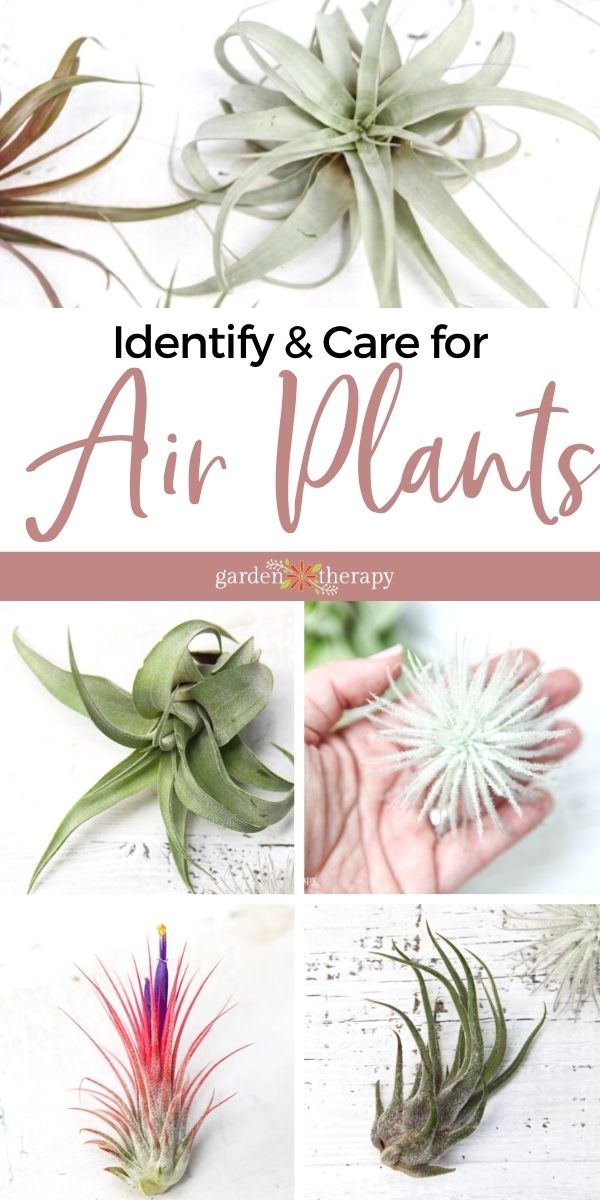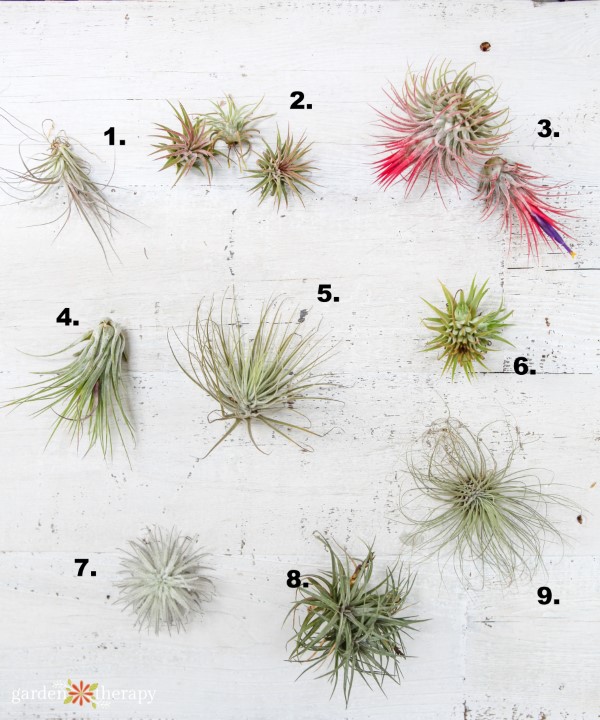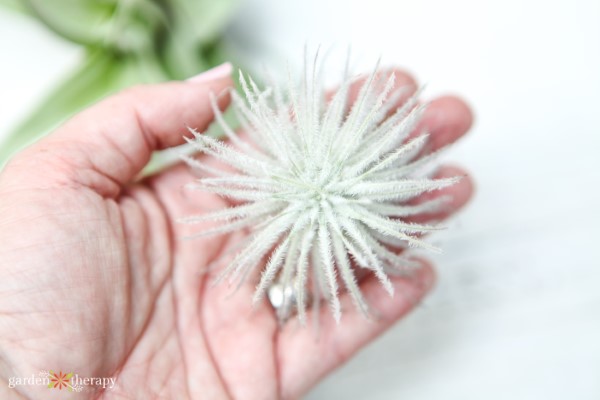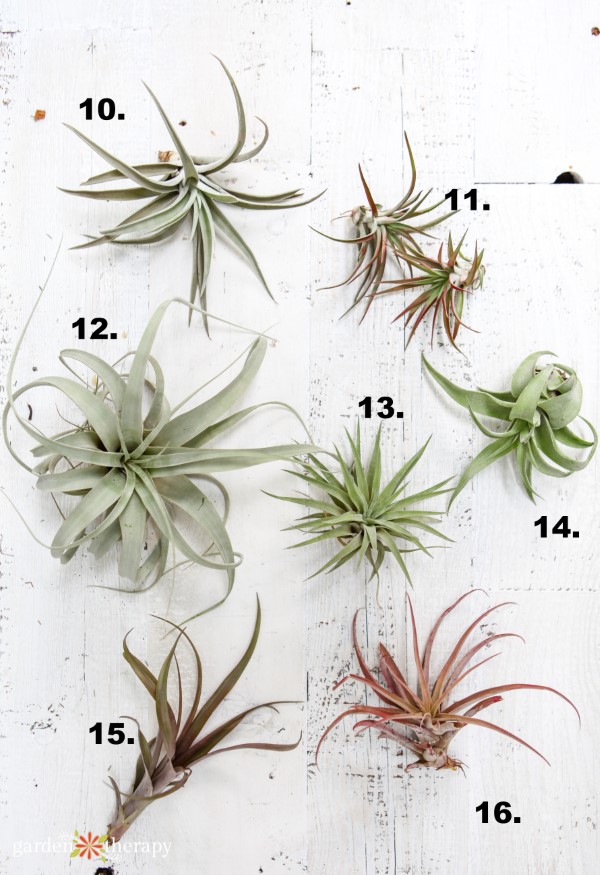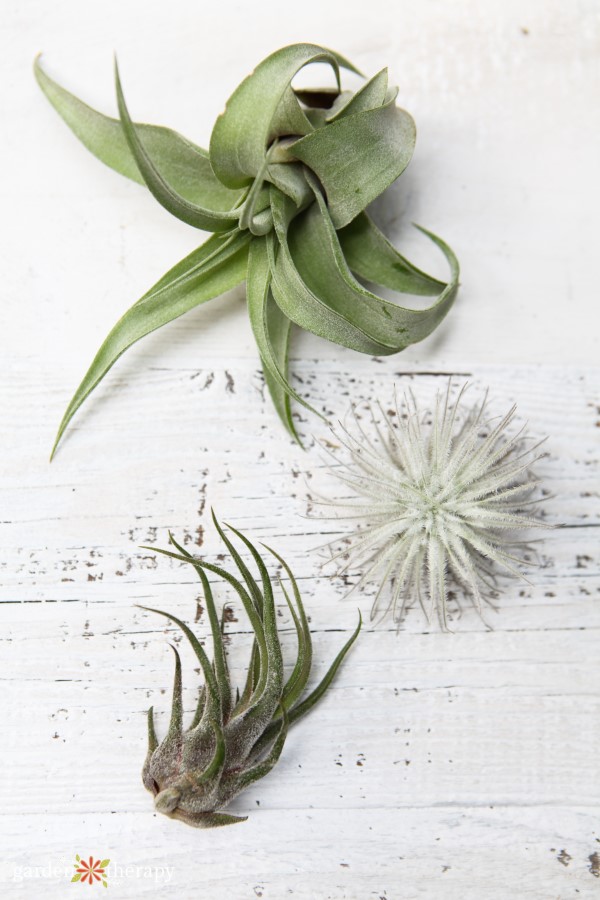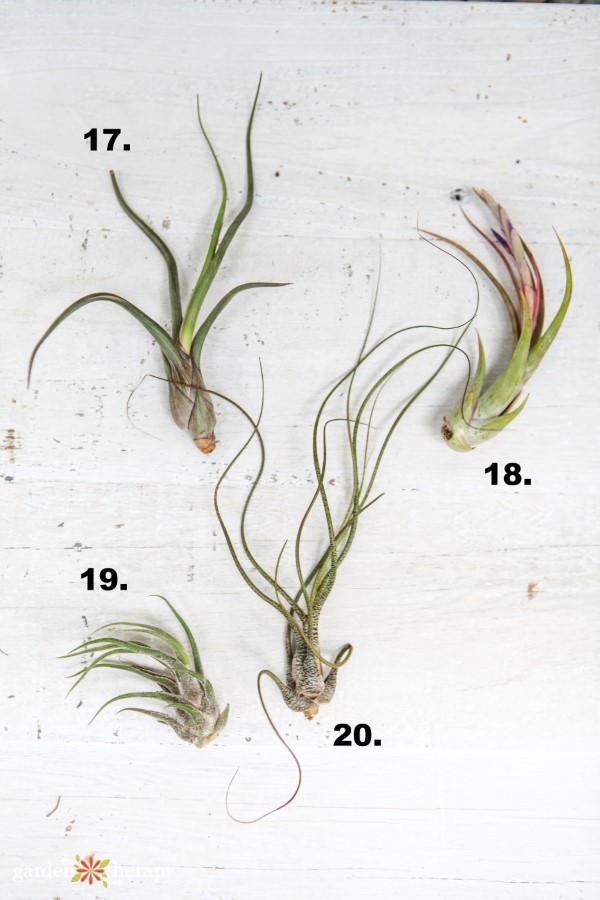If you’re lucky enough to own an air plant, it’s important to know exactly what type you have. Believe it or not, there are numerous varieties of Tillandsia, each with its own unique care requirements. In this article, we will help you identify your air plant and provide tips on how to care for it.
Air plants are incredibly fascinating and versatile indoor plants. Unlike traditional plants, they don’t need soil to grow. Instead, they absorb water through their leaves. What makes them even more exciting is the wide range of sizes and shapes they come in, from delicate cones to thick tentacles.
However, many people struggle to identify the specific type of air plant they own. This information is essential because different varieties have different care needs. Unfortunately, even in stores, you often find a mix of Tillandsia displayed without any labels or differentiation.
To help you out, we have compiled a list of common air plant varieties and provided some bonus information for each one. Let’s get started!
How to Care for Air Plants
Before diving into the specific varieties, it’s important to understand the basics of air plant care. While they are relatively easy to care for, they do have unique needs. If you are new to air plants or have struggled to keep them alive in the past, we recommend reading the following articles first:
- How to Keep Air Plants Healthy and Alive (They Might Even Bloom!)
- Learn How to Properly Water Air Plants
- How to Revive a Sick Air Plant
Getting to Know the Air Plant Varieties
Now that you have a solid understanding of air plant care, let’s explore the different varieties. Below, we have provided descriptions for each variety, along with some special care notes.
1. T. stricta ‘Black Tip’
The T. stricta ‘Black Tip’ is a small-to-medium-sized air plant with dark green leaves that deepen in color at the ends. It is considered one of the easiest air plants to grow, making it perfect for beginners.
2. T. ionantha v. rubra
This ball-shaped air plant features bright green leaves that deepen to a crimson color in the center. It has a fuzzy appearance due to the dense covering of trichomes.
3. T. ionantha ‘Conehead’
The Conehead air plant resembles a spiky pinecone, with upright leaves and a compact cone shape. It blushes bright red when flowering and produces a beautiful purple flower spike.
4. T. ionantha v. scaposa
This air plant has straight, upward-growing foliage that forms a tight bundle shape. Its pale green leaves can appear almost white, and it produces a bright purple flower bract when in bloom. Handle with care, as the leaves are more fragile than other varieties.
5. T. magnusiana
T. magnusiana stands out with its thin, silver leaves that create a wild mane. It produces purple flowers on a red spike, adding a vibrant touch to your collection. This variety prefers cool temperatures and ample air circulation.
6. T. ionantha Fuego
T. ionantha Fuego comes in both large and small varieties. It features rounded, stubby bases with spiky, silvery green leaves. When in bloom, these plants turn fiery red. They are easy to grow and propagate in various conditions, making them great for beginners.
7. T. tectorum (AKA Snowball)
Snowball is a fluffy, white air plant with hair-like trichomes on its leaves, giving it a snowball effect. This variety prefers a drier climate and requires plenty of air circulation. Unlike other air plants, it prefers bathing over misting.
8. T. stricta ‘Stiff Purple’
The stiff purple air plant features sprawling, spidery green leaves with a purplish hue. It produces thick, cylinder-shaped pastel pink flowers. These plants thrive in humid environments and can even be kept outside in warm climates.
9. T. argentea
T. argentea is a very small air plant with thin, wispy, hair-like foliage. Its bright red flower protrudes straight out of the middle of the plant. This tiny size makes it perfect for terrariums and small containers.
10. T. harrisii
T. harrisii has pale glaucous leaves that are thin, sharp, and curl downward. Blooms on this plant are red and purple. These air plants grow best in bright, full sunlight, so keep them somewhere well-lit.
11. T. brachycaulos v. abdita
This medium-sized air plant has soft green leaves that turn bright red when flowering. It produces colorful flowers in purple, yellow, and pink.
12. T. xerographica (AKA the King of Tillandsias)
Known as the King of Tillandsias, T. xerographica is a large rosette-shaped air plant with silvery-blue leaves. When in bloom, it produces a huge red and bright green flower spike that can last for months.
13. T. plagiotrophica
T. plagiotrophica features glaucous green foliage that grows in a stunning starburst shape. It produces a pure white flower in the center of its foliage. This variety prefers cooler temperatures and good air circulation.
14. T. streptophylla (AKA Shirley Temple)
The Shirley Temple air plant has pale green foliage with a slight purple tinge. Its broad leaves curl downward and sometimes form ringlets. These plants prefer dry environments and should be watered less frequently than other varieties.
15. T. flabellata rubra
This large air plant has wide green leaves with ruby-red tips and bright crimson flower spikes. It can grow up to nine inches long and can be grown in soil or without soil, like other air plants.
16. T. capitata ‘Peach’
The peach air plant features silvery foliage that turns a peach color when it blooms. It has a symmetrical conical rosette shape and benefits from regular misting and bathing.
17. T. baileyi (AKA Bailey’s Ball Moss)
Bailey’s Ball Moss is a long and thin air plant with bright green leaves. When in bloom, it produces vibrant purple flowers. This variety readily produces pups, making it an excellent choice for those who want their air plant to multiply.
18. T. circinata
T. circinata is a medium-sized air plant with silver-green leaves that curl all the way around into circles. It is a durable plant that thrives in low-light conditions.
19. T. pruinosa (AKA Fuzzywuzzy)
Fuzzywuzzy is a very small air plant with trichomes all over its leaves, giving it a fuzzy appearance. It has dark green leaves with a silvery tinge and produces purple flowers on a bright pink stem. This variety prefers cooler temperatures and fresh air.
20. T. butzii
T. butzii stands out with its rounded, speckled base and curly foliage. It reaches a height of five to seven inches and prefers cool, humid climates.
Now that you have familiarized yourself with these air plant varieties, take a moment to identify which one you have. We hope this information helps you provide the best care for your air plants. If you have any questions or want to share your experience, let us know in the comments!
More on Air Plants:
- How to Keep Air Plants Alive and Healthy (They Might Even Bloom!)
- Learn How to Properly Water Air Plants
- How to Revive a Sick Air Plant
- Crafting with Air Plants and Wire
- Air Plants in Seashells
- Plant Geeks Be Warned: This Living Jewelry Will Feed Your Obsession

